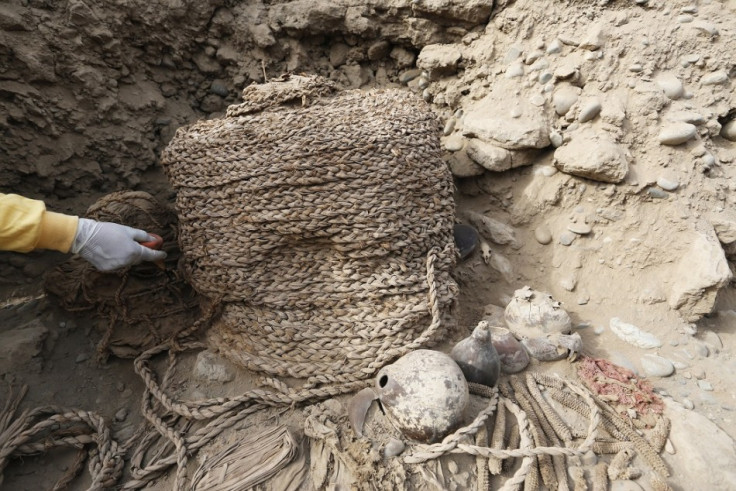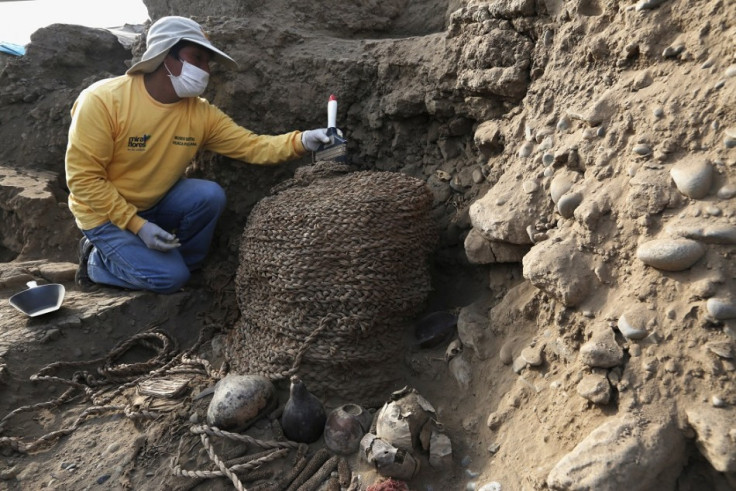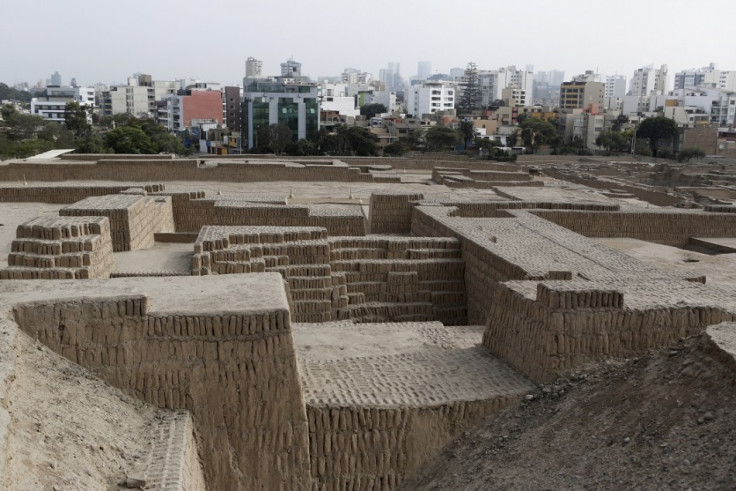Peru: Undisturbed Pre-Incan Tomb in Lima Reveals Child Sacrifice Rites [PHOTOS]
Wari tomb corpses in Lima site discovered wrapped in ceremonial fabric

An undisturbed Wari tomb with two corpses inside it has been discovered at an archaeological site in Lima.
The pre-Incan tomb holds the bodies of an adult and a child, with experts believing the child was killed as a sacrifice and buried next to the deceased adult.
Reuters reports that the tomb is over 1,000 years old. It was found at the Pucllana archaeological site in Lima.
The bodies were wrapped in ceremonial fabric and had been buried with 10 artefacts that remained intact.

Isabel Flores, an archaeologist at Pucllana, said the adult was probably a master weaver. She said the child was likely killed and buried in the tomb as an offering in honour of the adult.
"When we unwrap the bodies, we will be able to determine the adult's age, position in society and gender," she said.
So for 70 Wari tombs have been found at the Pucllana site. Gladys Paz, the head archaeologist of the team that discovered the tomb, said the find is one of the best yet: "In terms of big discoveries, this is in the top three."

The Wari civilisation lived in an area where Lima is now situated between 600 and 1000AD, around 500 years before the Inca Empire surfaced.
It is thought the Wari culture deteriorated from around 800AD following centuries of drought and the city of Wari was dramatically depopulated by 1000AD.
Some Wari buildings discovered were deliberately blocked up, suggesting they planned to return to their empire when the rains returned, but the culture disappeared before this could happen.

Earlier this year, archaeologist announced the discovery of the Temple of the Dead, which contained Wari Queens, human sacrifices and a host of gold and silver.
The team worked in secret for months in order to foil tomb raiders, who may have tried to steal the valuable artefacts had they got wind of the discovery.
The Wari Queens were found sitting upright with their prized possessions surrounding them. Archaeologists believe this suggests women held more power within Wari culture than previously thought.
© Copyright IBTimes 2025. All rights reserved.




















